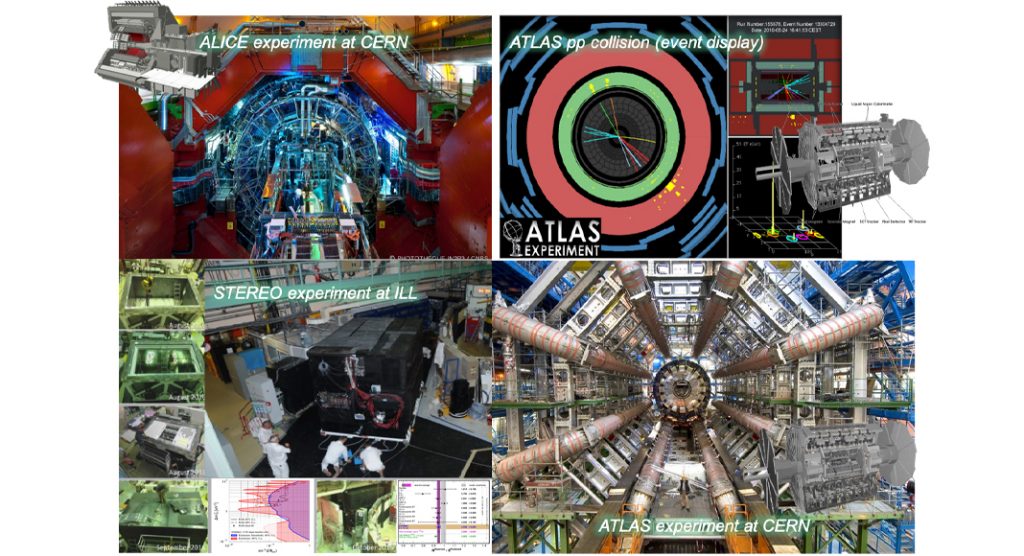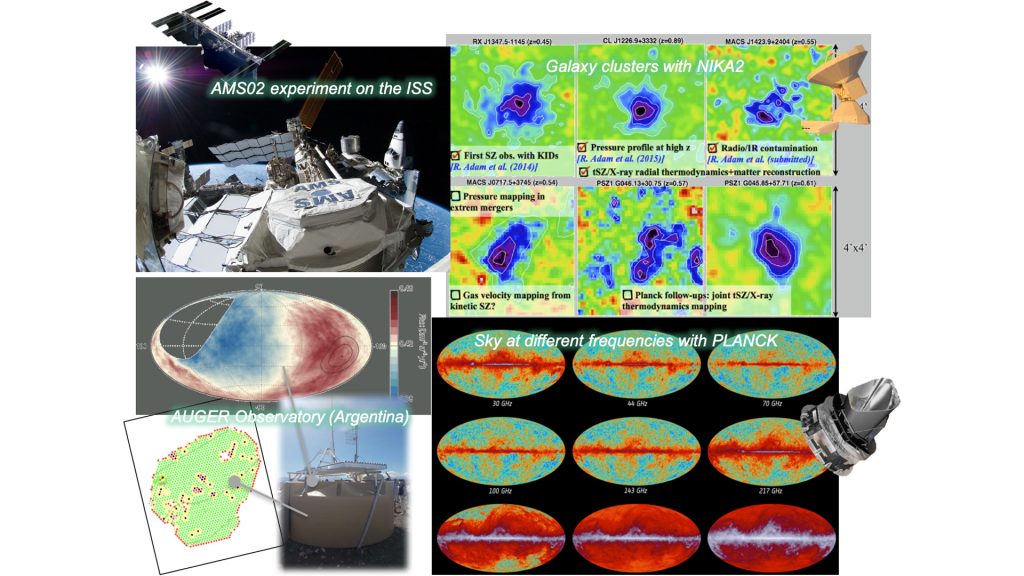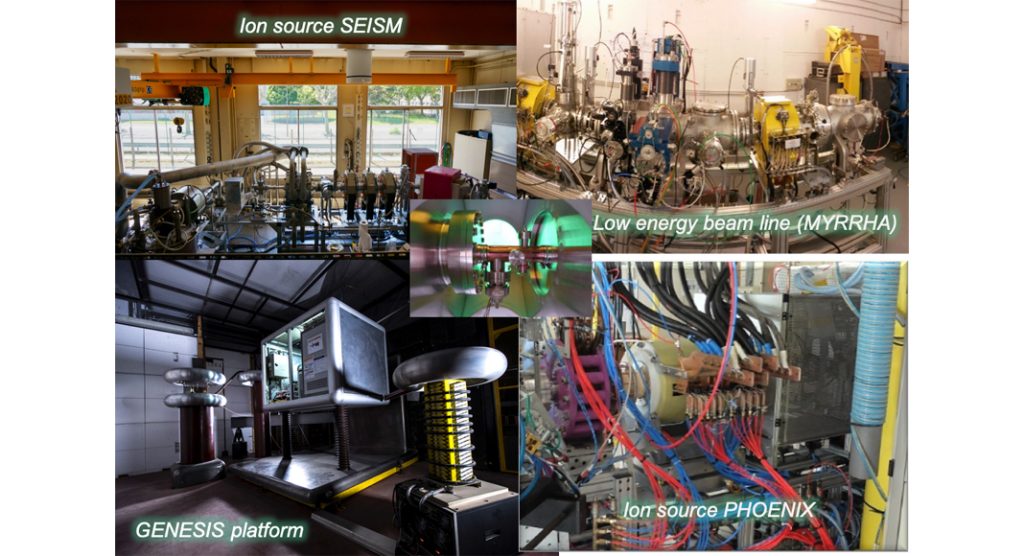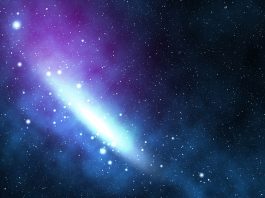IN2P3 (CNRS)’s Arnaud Lucotte outlines the role of the Laboratory for Subatomic Physics & Cosmology in numerous physics experiments around the world.
The LPSC is a Mixed Teaching and Research Unit, affiliated to the National Nuclear and Particle Physics Institute l’IN2P31 from the CNRS2, as well as to the University Grenoble Alpes UGA3 and Grenoble-INP.4 The 210 employees working at LPSC are composed of 70 CNRS researchers and university lecturers, 95 engineers and technicians, 35 PhD students, and 25 fixed term contract workers. Created in 1967 in Grenoble, the LPSC is also at the head of the national underground facility in Modane LSM5 and has been since 2019. The laboratory is a leading research centre in the region and plays a significant role at the national level. It is also involved in international scientific and technical projects. Due to their complexity, these projects can span 10-15 years and may involve several hundreds of people in large international collaborations. Its yearly budget is close to €13m (including wages) with diverse funding sources.
Fundamental research
Fundamental research is the driving force of the activities of our laboratory. Among the many themes studied at the LPSC, some are focussed on the greatest unsolved mysteries of the Universe, e.g. the unification of forces, the origin of the mass of particles, the origin of the matter-antimatter asymmetry in the Universe, and the search for dark matter and dark energy. The research programme carried out at the laboratory thus starts at the scales of the nuclei of atoms and even smaller, where quantum and relativistic physics laws prevail, aiming to understand the characteristics of the most elementary building blocks of matter and their interactions and to study the limits of existence of atoms and characterise new states of nuclear matter.
Research also extends towards the infinitely large, where the stake is uncovering the origin of the large structures of the Universe, studying the cosmic phenomena and understanding its composition and evolution and with the aim of forming a vision valid from the early Universe to its present state.
The branches of physics at these two extremes are actually intimately linked since infinitely small-scale physics played an essential role in the first moments of the universe – and only such a convergence in a multi-scale and multi-messenger approach is able to address the major questions for the coming decades, such as the existence of dark matter and dark energy in the Universe. As a consequence, the laboratory has developed expertise in a large span of scientific fields in the framework of accelerator-based, ground-based observatories as well as in underground-based, and even satellite-based, experiments.

Applied research
Although the LPSC is mainly involved in fundamental research, applied fields research has always been carried out at the laboratory in three main fields: nuclear reactor, ion sources, and instrumentation associated with the health sector, with the perspective of contributing to societal challenges such as carbon-free energy production and (accelerator-based) cancer therapy technologies.
LPSC research activities are supported by strong technical departments in mechanics, electronics, informatics, and instrumentation, and benefits from the development of research platforms on the lab site – a neutron production irradiation facility, GENESIS, is dedicated to nuclear experiments and to industrials, accelerator lines halls, assembling halls, and several dedicated technical platforms.
Particle physics and hadronic physics
Particle physics: ATLAS and the search for new physics at the LHC (CERN)
Following the extraordinary discovery of the Higgs boson in 2012, the team is focusing on the understanding of the electroweak spontaneous symmetry breaking via the characterisation of the Higgs boson production in its different channels, preparing for the study of the double Higgs production at the High luminosity LHC at CERN.6 At the same time, the researchers are also involved in the search for signs of new physics beyond the Standard Model, focusing their activities on dark matter searches in pp collisions using monophoton events, or new physics signs (SUSY, Grand Unified Theory, compositeness).
In parallel, from 1985 to 2010, the laboratory has been one of the major actors in the calorimeter pre-shower detector conception, construction, and operation within the collaboration. In view of the High Luminosity data taking period, the laboratory is now participating in the construction of the internal tracking device mechanics architecture.
Hadronic physics: ALICE and the study of quark-gluon plasma, a new state of matter at the LHC (CERN)
The LPSC initiated its participation in the ALICE collaboration by taking charge of the assembly and installation of the experiment’s Electro-Magnetic Calorimeter (EMCal) and DCal calorimeter modules, which have been in operation since 2010. The lab also contributed to the conception and production of the associated jet and photon Level-1 trigger electronics, as well as to the jet and electron/photon reconstruction and calibration. Given its significant expertise in calorimetry, the team played a major role in the development of quark-gluon plasma probes using photons and jets, like jet quenching studies as well as photon-hadron and photon-jet correlation studies.
Particle physics: NEDM and GRANIT – searching for new physics with ultra-cold neutrons
The team is involved in precision measurements using ultra-cold neutrons in view of testing gravity and searching for signs of new physics beyond the Standard Model of particle physics. With the GRANIT experiment, we contributed to the precise determination of the quantum energy spectrum of a neutron in the gravitational potential via the measurement of neutron wave function associated to its rebound heights. Results showing the measurements of first transitions allowed gravitation to be constrained.
A second line of research concerns the measurement of the electric dipolar moment of the neutrons at ILL7 and with the nEDM experiment at PSI.8 The world best limit was released in 2020 by the collaboration. The team is now heavily engaged in the construction of the next generation of detectors at PSI within the n2EDM collaboration, namely the neutron switch and the magnetic field mapper.
Neutrino physics: STEREO, RICOCHET, and DUNE to unravel the neutrino puzzle
The lab is involved in three stakes in neutrino physics: the search for a fourth-generation neutrino state said to be ‘sterile’, which would be a major breakthrough and have a significant impact in cosmology. Here, the lab has been involved from 2012 to 2020 in the design, construction, operation, and exploitation of the STEREO experiment, located a few metres away from the nuclear reactor core at ILL from 2012 to 2020. The final results helped to set the most stringent limits yet on such production.
The lab is also participating in the RICOCHET experiment, which is dedicated to the measurement of the coherent neutrino-nucleon elastic scattering, which constitutes a new probe for neutrino properties. The experiment is currently under construction at the lab before its installation at ILL and should run for a few years.
Finally, the lab is contributing to accelerator neutrino physics efforts with the DUNE long baseline experiment, devoted to the PMNS9 matrix element determination which fully describes the properties of neutrino interactions by participating in the construction and preparation of the DUNE long baseline experiment at FermiLab.10 The goal is to constrain PMNS matrix elements and to constrain the CP violation phase space and determine the neutrino hierarchy puzzle.

Astroparticle physics and cosmology
Cosmic ray physics: the AMS and Auger experiments
Research on cosmic rays (CR) started in the 1990s at the LPSC. The lab became engaged in high energy cosmics rays experiments, from 1 MeV to 1 GeV, with the CREAM stratospheric balloon, from 1 GeV to 1 TeV with the AMS experiment, and up to energies beyond PeV at the Pierre Auger Observatory.
Involved in strong instrumental implications in detector construction, the lab was responsible for the Ring Imaging Cerenkov detector (RICH) construction and integration of the AMS02 detector, which was sent to the International Space Station in 2011 and is still in operation today. The team is involved in the determination of the CR composition (B, C, N, O nuclei and B/C ratio) and in the measurement of anti-nucleus abundance rates, allowing the presence of dark matter self-interaction mechanisms to be probed.
Located in the Argentina pampa, the Auger observatory is formed by an array of 1660 surface (Cerenkov) detectors complemented by fluoresence detectors, forming a 3,000km2 detection area. Cosmic rays are detected via measurements of the particle showers produced by the interaction of primary cosmic rays with the atmosphere layers. Strongly involved in the ugrade of the surface detector with the production of scintillating modules and associated electronics, the LPSC used to study Ultra High Energy neutrinos while conducting R&D on the complementary radio-detection (GHz) of the atmospheric showers. The lab is now focussing on modelling the nature of primary CR and on the detection of high energy photons.
Cosmology: Cosmic Microwave Background (CMB) with Planck and NIKA
The measurement of the CMB anisotropy started at the LPSC in the 1990s with stratospheric balloon-based experiment Archeops. Since then, the lab has then been involved in the construction of the ESA11 Planck satellite, which is dedicated to the precise measurement of a CMB anisotropy map based on the use of cryogenic bolometers. That was in operation from 2009 to 2013 and was exploited until recently. Involved in the construction of the High Frequency Instrument and its electronics, the LPSC played a major role in the analysis and data interpretation leading to the release of the first maps in different frequencies. Planck publications made history, shedding new light on the early Universe (400,000 years after the Big Bang) allowing stringent constraints on cosmologic models to be established.
For the last ten years, the lab has engaged with Neel Institute12 in the development of a promising new technology, the Kinetic Inductance Detectors (KIDs), which has been used with remarkable success over the last eight years in a ground-based telescope within the NIKA projects. The team took the leadership in the NIKA observation programmes which took place at the IRAM13 telescope, conducting a galaxy cluster cosmology programme using the interaction of CMB photons with the galaxy cluster electron population (Sunyaev-Zeldovich effect). Supported by CNES14 and CNRS, this programme should lead to a participation to the future ground based S4 experiment and satellite-based CMBNext.
Cosmology with LSST and EUCLID
The LPSC is involved in two major programmes in astronomy dedicated to the dark matter and dark energy puzzles. In 2009, the lab joined the LSST15 collaboration at the Vera C. Rubin observatory telescope and its associated 3.5 ton, 3.2-billion-pixel camera. The lab was responsible for the construction of the filter loader and for the realisation of the calibration test bench used for the camera. As a member of the DESC collaboration, the team is focused on the reconstruction of the galaxy photometric redshifts dedicated to baryonic oscillations studies, as well as on galaxy cluster cosmology using lensing. In parallel, in 2018 the lab joined the ESA16 EUCLID satellite experiment, which is expected to be launched in 2022. In this project, the lab is also engaged in the preparation of the cosmology cluster survey at high redshifts using lensing effects.
Direct detection of dark matter and neutrino physics: the national underground facility of Modane
Located 1,700m below the surface, the LSM offers an ultra-low radioactivity environment thanks to a strong cosmic-rays flux attenuation and to the development of an anti-radon facility, allowing radioactivity levels to be reduced to below 2-3mBq/m3. Several experiments are hosted here and are dedicated to direct detection of dark matter and neutrinoless double-beta decay experiments. The facility is also open to geoscience (radiocarbon dating) and biology projects.
One of the experiments hosted by the LSM is the MIMAC project, which aims at the direct directional detection of dark matter by the measurement of the interaction of the DM candidate with the nuclei of the gaseous detector. A dedicated programme of R&D led to an original technique – a low pressure micro-megas TPC – which allows both the nucleus recoil energy and direction to be measured. In parallel, these developments lead to a strong programme of technology transfer in neutron detectors dedicated to the determination of neutron flux measurement in a broad range of energy from keV to MeV.
Nuclear physics and applications
Nuclear reactor physics
The nuclear reactor physics team is one of IN2P3’s main groups in the framework of CNRS’s interdisciplinary mission in European programmes and it has significant industrial support. The team’s activities cover a large spectrum of nuclear reactor physics along two main lines of research.
Accelerator Driven System (ADS) is considered for the transmutation of nuclear waste and the production of radionuclides for health applications. In addition to the construction of the low energy beamline dedicated to neutron production (see below), the lab is involved in the online monitoring of the criticality used to control the fission chain reaction and its application.
The second programme is the conception of fourth generation nuclear reactors that are designed by safety criteria. The lab developed an innovative fast breeder reactor model based on the Th-U233 cycle in which both fuel and coolant are liquid: the Molten Salt Fast Reactor (MSFR). This has been selected as one of the candidates for the future in the international GEN-IV framework. These research activities are based on a strong expertise in nuclear reactor physics, nuclear data measurements, safety studies, and reactor fleet deployment scenarios studies. They are supported by the development of multi-physics simulation tools and the establishment of a Fluids Experiments and Simulations in Temperature (FEST) infrastructure at the lab, which is operated at high temperature and used to validate simulations and modelling.
Instrumentation for innovative cancer therapy
The development of expertise in nuclear instrumentation led the laboratory to participate in programmes dedicated to innovative cancer therapies that are linked to accelerator and detector realisations. This research is carried out in collaboration with INSERM16 laboratories as well as in the framework of the national funding programme ‘Plan Cancer’.
The first line of research is the building of an effective beam profiler for X-ray radio-therapy which can be used to control the effective dose delivered to the patient. This has been tested at the Grenoble Hospital. The team is now focussing on developments dedicated to intense e-beams used in flash therapies.
A second line of research relates to R&D associated to the realisation of fast response & radiation-hard diamond sensors that could be used for hodoscope instruments necessary for the monitoring of pulsed hadron beams, as well as in the location of the interaction area.
The last line of research concern R&D relating to the production of high flux thermal and epithermal neutrons targeted at the patient in the framework of Accelerator Based Neutron Capture Therapy – this later activity benefits from the expertise in neutron detectors built for dark matter detection.

Accelerator and ion sources physics and technologies
Accelerator and ion sources: physics, applications and R&D
The lab’s department for Accelerators and ion sources physics is composed of a research team and a technical team dedicated to the associated specific areas. The lab is involved in the GANIL national centre for the production of accelerated heavy ions and radioactive beams as well as in European programmes.
The first area of expertise concerns the accelerating beam and transport lines dedicated to the production of neutrons: the team built a platform dedicated to the production of rapid neutrons (2-14 MeV) based on a deuteron/proton accelerator directed to a tritium or deuterium target. The team was responsible for the construction and on-site installation of the low energy beam line for the ADS project conducted at the SCK CEN17 and is involved in future high intensity proton injector developments in the MYRRHA European programme.
The other field of research concerns the ion sources which constitutes a unique area of expertise within the IN2P3 and CNRS. In particular, the laboratory has pioneered the development of Electronic Cyclotron Resonance (ECR) ion sources and their miniaturisation. This expertise led to the creation of a spin-off dedicated to the technology development for diverse applications and is now well-established in the field. The LPSC also took responsibility for the conception, construction, and qualification of ECR ion sources used as a charge breeder (PHOENIX booster) for the production of accelerated radio active ion beams at TRIUMF18, and at LNL-INFN19 for the SPES project, and GANIL (SPIRAL-SPIRAL2).
In parallel the team is involved in an R&D programme concerning a 60 GHz ECR ion source which constitutes the highest frequency source with a ‘minimum-B magnetic’ confinement worldwide.
References
1 Institute for Nuclear Physics and Particle Physics (IN2P3)
2 National Center for Scientific Research (CNRS)
3 University Grenoble Alpes (UGA)
4 Grenoble-Institute of Physics, engineering school (France)
5 Laboratoire Souterrain de Modane (LSM) i.e. Underground Laboratory of Modane (France)
6 European Center For Nuclear physics, Geneva (Switzerland)
7 Institute Laue Langevin, Grenoble (France)
8 Paul Sherrer Institute, Villigen (Switzerland)
9 Pontecorvo-Maki-Nakagawa-Sakata matrix (PMNS)
10 Fermi National Laboratory, Chicago IL (USA)
11 European Space Agency
12 Neel Institute, Grenoble (France)
13 Institut de Radio-Astronomy Millimétrique (IRAM)
14 National Center for Spatial Studies (CNES)
15 Large Synoptic Survey Telescope, Vera Rubin Telescope (Chile)
16 Institut National de la Santé et de la Recherche Médicale (INSERM)
17 SCK CEN Belgian Nuclear Research Center, Mol
18 TRIUMF Canada’s national particle accelerator center (Vancouver), Canada
19 LNL INFN, National Laboratory of Legnaro, National Institute for Nuclear Physics
Please note, this article will also appear in the eighth edition of our quarterly publication.









